All that sparkles aren’t natural diamonds. So how do you tell the difference between a lab grown diamond and a natural diamond?
Purchasing any diamond is a huge investment, and you want to make sure what you are buying. Knowing an expert helps, and Axel’s Pawn Shop is the place to get your diamonds tested and appraised.
A natural diamond and a lab-created diamond look the same to the naked eye. It is impossible to distinguish the difference. Lab grown diamonds are grown in highly controlled laboratory environments using advanced technological processes that replicate the conditions under which diamonds naturally develop when they come from in the mantle beneath the Earth’s crust.
Lab grown diamonds can’t be called synthetic diamonds, because they are made of pure carbon, like mined diamonds, and similar temperature and extreme pressure. Lab diamonds exhibit the same optical and chemical properties as natural diamonds.
Mined diamonds are made from pure carbon and formed far beneath the Earth’s surface under temperature and extreme pressure conditions. They have tiny imperfections. There is no perfect natural diamond; a natural diamond will weigh less than lab grown diamond of the same shape.
Diamonds conduct electricity better than other stones. A tester will clearly indicate whether a diamond is mined or lab-created. A real diamond will show conductivity, while other stones like moissanite and cubic zirconia will not.
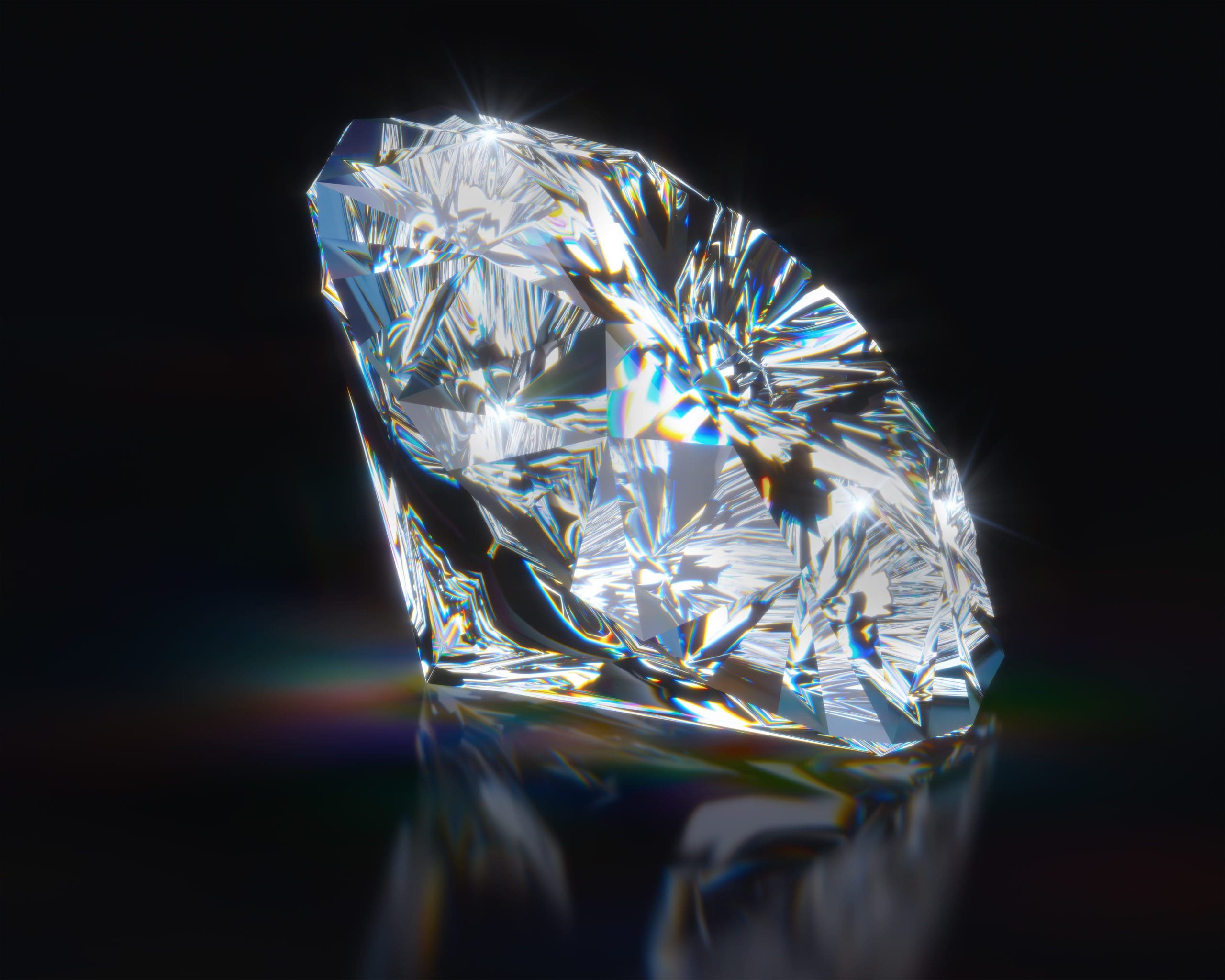
The thought of buying a fake diamond for the price you would pay for a real diamond is unsettling.

The Price of Real Diamonds vs Lab Created Diamonds
There is a school of thought that lab created diamonds, which are actually real diamonds, and offer the same brilliance, sparkle, and shine of a natural diamond, mined diamond. If you want a cut price diamond that looks exactly the same, lab diamonds are an option to consider. The drawback is that the long-term value of the lab diamond will decline.
For example, a lab diamond bought for $1,000 today may be priced at a fraction of that amount in just one or two years.
Natural diamonds often retain around 50% of their initial value. Lab grown diamonds are almost impossible to resell without accepting pennies on the dollar.
When you want to purchase a diamond, lab grown diamonds are about 60% less than natural diamonds. During the last few years, the price of lab diamonds has dropped.
How Can You Tell the Difference and Know What You Are Purchasing?
Axel’s Pawn has equipment needed to tell the difference. The testing equipment isn’t cheap to purchase, but if you are buying diamonds regularly and in the business of mounted loose diamonds, you want to make sure you know the difference.
Axel’s Pawn Offers Diamond Testing and Appraisal Services
In just a few seconds, the pawn shops tester will show the color “blue” and let you know if you have a natural diamond or lab grown diamond.
What if you don’t have a diamond tester?
Various tests provide information about your diamond to determine if the diamond is real or fake.
To begin, be prepared to take the time to inspect diamonds thoroughly. Not all diamonds will present the same, and it is recommended you visit reputable pawnbrokers like Axel’s Pawn Shop and have your diamonds tested if you want to know for sure.

Nake Eye and Personal Testing:
Fluorescent Under UV Light Test
Diamonds tend to emit a soft colored glow when subjected to ultraviolet light like a black light, and about 30% of diamonds will do this. According to GIA, some diamonds emit a bluish light or, more rarely, a yellow or orangy light. Once the UV light source is removed, the diamond stops fluorescing.
Fluorescing is not a grading factor like the 4Cs. The 4Cs are the characteristics used to value a diamond, color, cut, clarity, and carat.
Fluorescing terms describe the character of the “glow” of the diamond: None, Faint, Medium, Strong, and Very Strong. The diamond fluorescing may or may not affect the price of the diamond.
There are diamonds with a blue-colored glow, but not all diamonds glow under UV light.
Colorless or near-colorless diamonds that colorless (D-F) fluorescent diamonds sell at up to a 15% discount, since the fluorescence is perceived as a defect.
Lab-grown diamonds don’t fluoresce. For now, a natural diamond has this ability, which may be a trait that differentiates the lab-grown diamond from natural diamonds.
Fog Test
Conducting a fog test may help determine if your diamond is a natural diamond or lab created. Before you conduct the fog test, make sure the diamond is clean and free of grease. Creating a light fog on the surface of the diamond by breathing on it. The moisture and heat from your breath will cause a fog on the diamond surface. If the fog dissipates immediately, the diamond is real. If the fog takes a few seconds to go away, the diamond is likely to be a fake diamond.
Diamonds conduct and disperse heat rapidly. Diamonds have stiff chemical bonds between light carbon atoms, which gives them high thermal conductivity. The thermal conductivity may be similar in moissanite, so it may not be the best test to determine if a diamond is natural or moissanite. Most lab grown diamonds don’t have thermal conductivity.
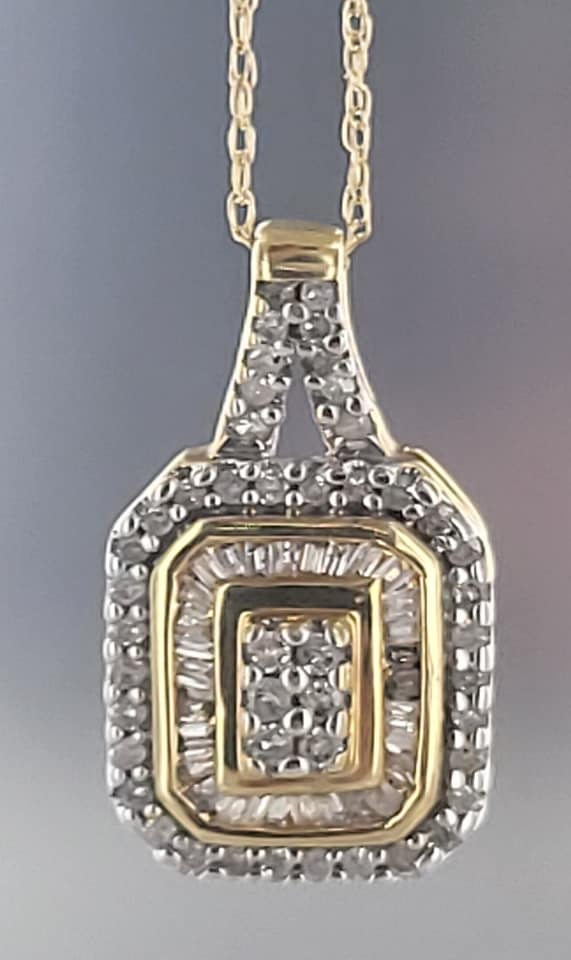
Diamond Sparkle Test
Diamonds sparkle. A diamond will bend and refract light off the diamond’s lower surfaces up to the flat top surface, giving off a “sparkle.” This is known as brilliance, and a genuine diamond has true brilliance.
Lab-created diamonds and stones like Cubic Zirconia will not refract light. They will have less brilliance, if any.
You can take a newspaper or written page, like in a book, where there is a lot of writing. Put the flat surface of the diamond on the page. Can you read the letters on the page?
A real diamond will have facets that refract the light in different directions, making readability difficult. The refracted light bends the letters, rather than presenting them in a straight line. The refracted light makes it impossible to read the letters.
You can also complete a dot test. Get a clean white piece of paper and draw a small dot. Lay the diamond on its flat side on the paper. When you look through the pointed end of the diamond, there will be a circular reflection inside the diamond. If this happens, the stone is fake. The diamond is real if you can’t see the dot or a reflection.
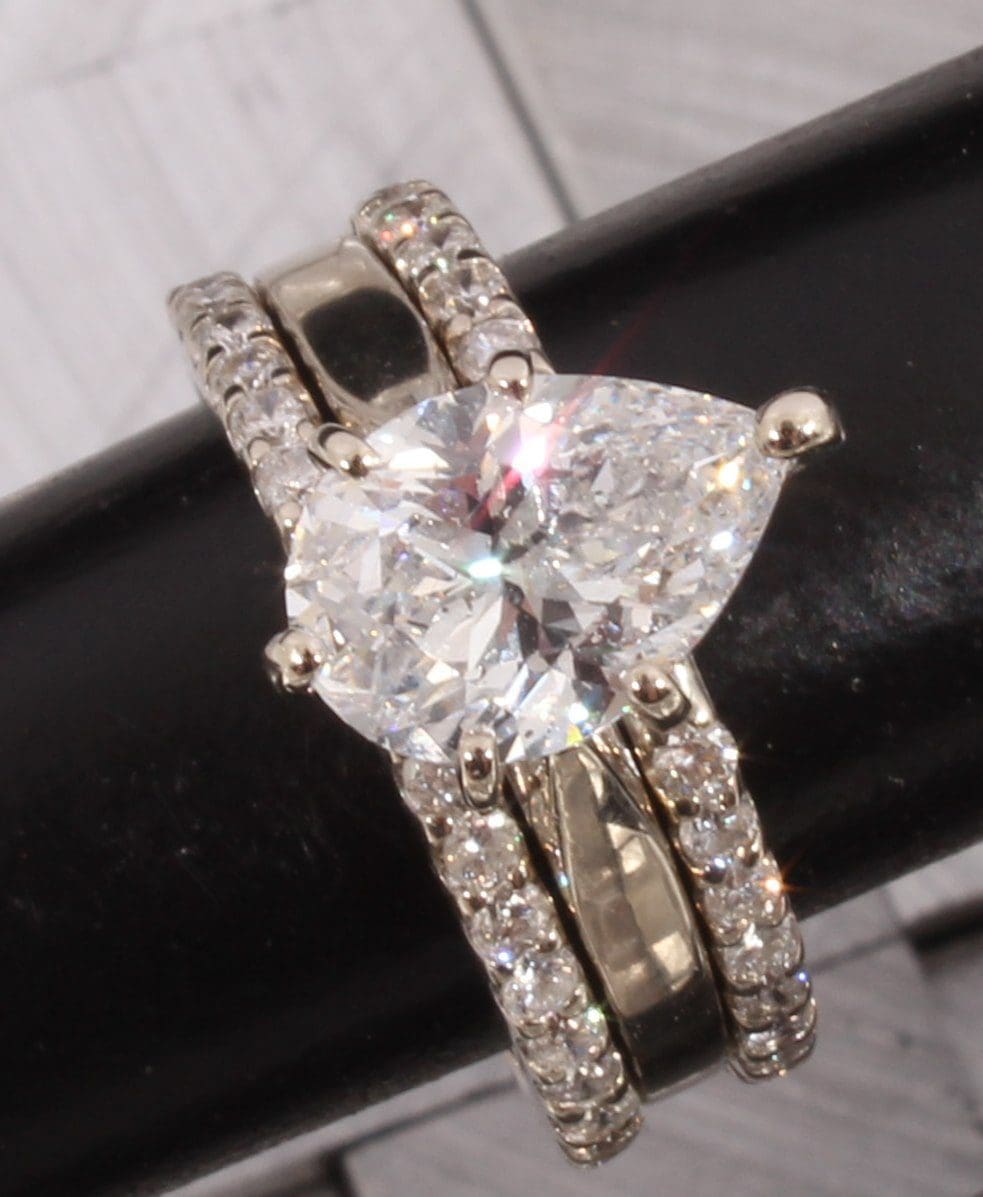
Scratch Test
Diamonds are one of the strongest gems. They can cut through glass. They will scratch the surface of a glass or mirror. If you can make a scratch, there is a good chance the diamond is real. Remember, the science behind lab-created diamonds is improving, so some lab-created diamonds may also pass the scratch test.
Does it Sink in a Normal-Sized Drinking Glass?
If you fill a regular drinking glass with water and drop loose diamonds into the glass, they will sink if they are real diamonds. Natural diamonds are heavier than lab created diamonds.
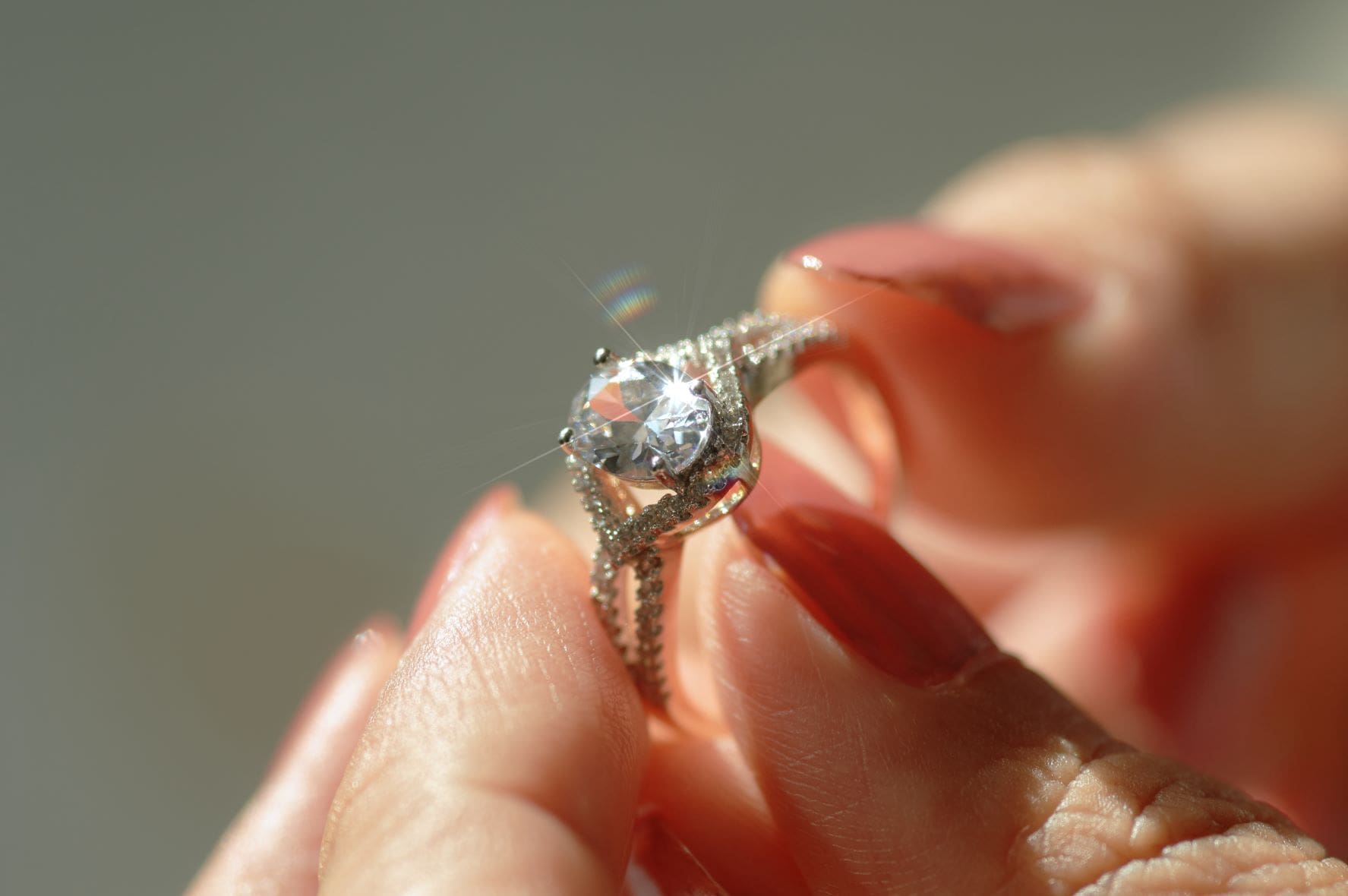
White Topaz vs. Natural Diamonds
A gemstone with the closest resemblance to a natural diamond is White Topaz, White Sapphire, White Zircon, and Moissanite. White Topaz is softer than a diamond, and it is easily scratched by other materials and isn’t strong enough to pass the scratch test.
If you look at the gem with a magnifying glass, you can see that the scratches on the gem’s surface aren’t a natural diamond.
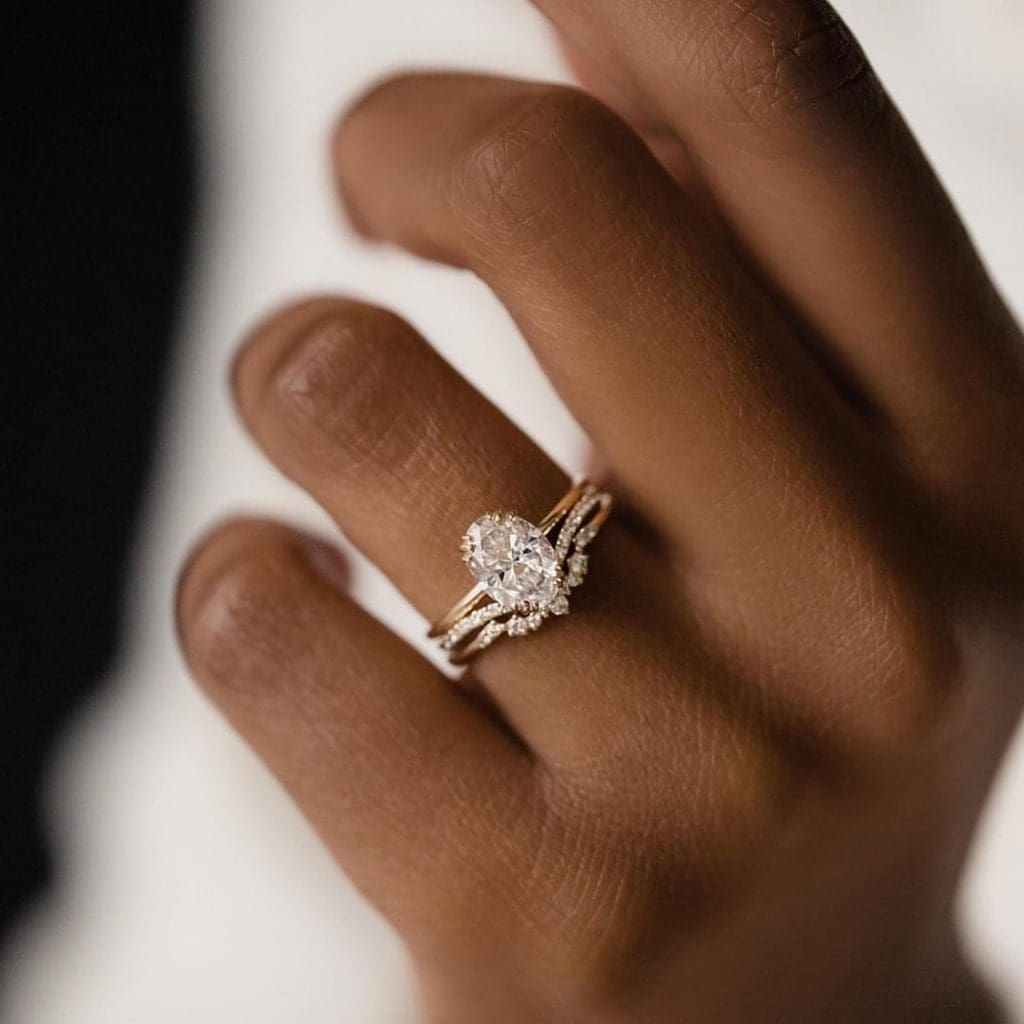
Why Is It Important to Have Authentic Diamonds?
Diamonds are durable, beautiful, and an investment that holds their value. If you are shopping for a diamond necklace, diamond ring, diamond tennis bracelet, or diamond and gold earrings, having an actual diamond is essential for long-term durability and beauty. A fake diamond will weigh more than a real diamond of the same size and shape, about 55% more.
Mined diamonds hold their long-term value.
A true diamond has refractive qualities that a fake diamond doesn’t possess. Light will bounce in different directions, and it will “sparkle.”
Diamonds grown in a lab are created from the tiny carbon seeds of a pre-existing diamond. Lab created diamonds are grown through a sustainable process using chemical vapor deposition (CVD), making it easier to keep up with demand without sacrificing quality or engaging in harmful processes. They may have some minor metallic inclusions and weak strain patterns that affect the sparkle of the diamond.
A pawnbroker who knows what tests to perform and has the proper equipment, like the Diamond Tester at Axel’s Pawn, the team is trained to look for true diamonds vs. fake diamonds set in white gold before they commit to an offer. This ensures you will find genuine diamonds on their retail floor, but also high-quality jewelry even if you are looking for natural gems that aren’t diamonds.

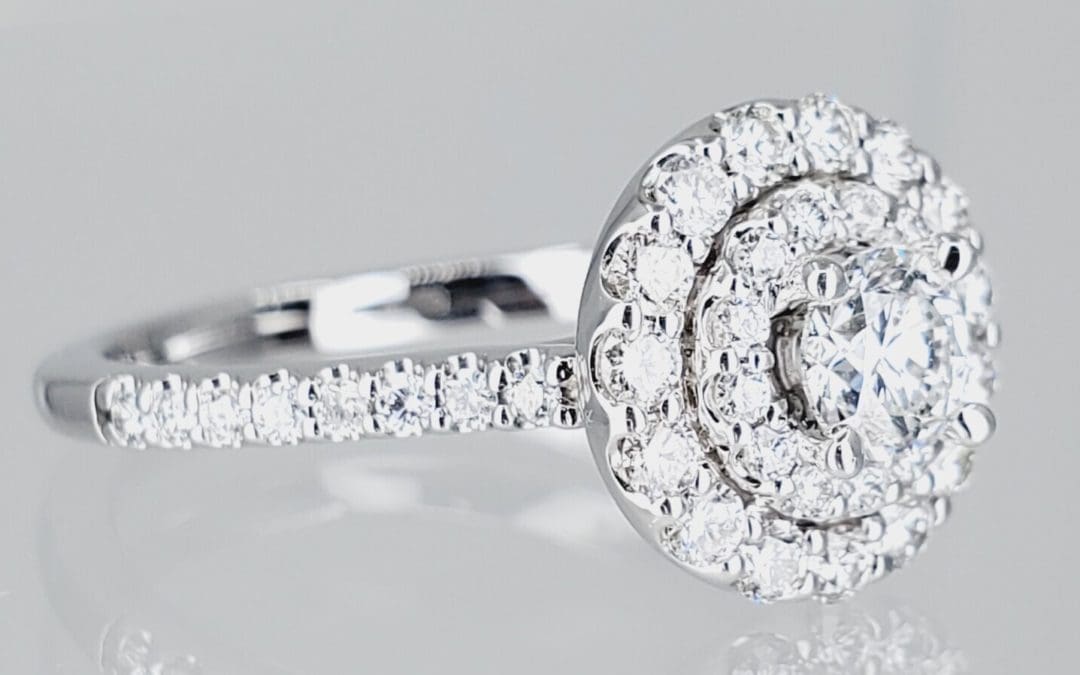



Recent Comments